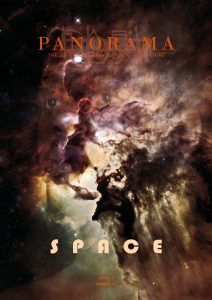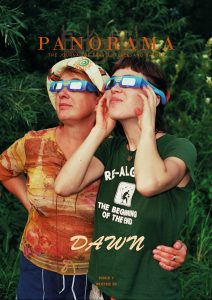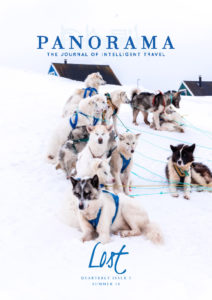Once, I wrote an imaginary break-up note in part to my partner, but more to the place we live: “It’s not you, dear, it’s the highway: its infuriating linearity.” I imagined the road as a cage. Its singular presence limits the imagination. Multiple roads suggest possibility: roads not taken, two roads diverging. Roadlessness opens the imagination further, to other kinds of travel.
One road, though, is a hard and fast line. One road is limiting. One road is almost un-American.
But I stayed, and stayed, and that linearity became some kind of comfort.
*****
The Parks Highway winds through the mountains from Anchorage and into the relative flat of Interior Alaska to Fairbanks, across land where, once, only rivers and mountains formed boundaries.
Construction of the Parks Highway, then called the Anchorage-Fairbanks Highway, was completed in 1971, and like all major construction projects in Alaska, its story is told with a sense of industrial heroism. The highway, like the Alaska Railroad 50 years earlier, opened up the Interior. It roughly parallels the railroad, and like rail travel, revolutionised tourism in the region. Roads and railroads snake across the continent, transforming the places they reach, their effects reduced to lines on maps.
Between the entrance to Denali National Park (six million acres, half a million visitors a year, nowhere to get a cup of coffee September through May) and the town of Cantwell (year round population 200, give or take, a new coffee shop we hope sticks it out through the winter) lies a scattered neighbourhood populated mostly by Park Service and tourism industry employees.
This anomalous little bubble is not a neighbourhood in the urban or suburban sense of the word, where sidewalks and fences easily define property lines and the types of activities deemed appropriate between the boundaries. Most intersections along this stretch of highway are private driveways, marked perhaps with a sign, a traffic cone, or, in one case, a stick horse planted in a five-gallon bucket. It’s the kind of community where you can let yourself into your neighbour’s house when they’re not home and help yourself to a cup of sugar, where everyone’s invited to a toddler’s birthday party whether you have kids of your own or not. It’s wholesome, a bit provincial, and a bit self-satisfied. Its surroundings are objectively beautiful: an expanse of spruce forest that gives way to rock and tundra in the mountains cradling us, and wilderness — both the federally designated kind and the kind that asserts itself simply by remaining undeveloped — stretch out on both sides of the highway that brings people here and away.
My neighbours are mostly white, mostly transplanted from elsewhere, and about half are committed to staying more than a few years. Few have been here long — one, maybe two generations. The highway predates most of the houses, and the majority of residents. Some roads are named, but few are labeled, so not everyone knows them, and other markers stand in where a name isn’t recognised. Some names can be traced to Athabaskan words misheard by settlers and early National Park officials a century ago, but often repeated as the only connection to local Indigenous history. Other names can be traced only as far back as someone still living down the road, or to jokes or references that that may not outlive the current residents. Karma Ridge, for example, refers to a bluff colonised by environmentalist hippies; Dead Dog Flats to a neighbouring hollow where the winter cold sinks and stays, a microclimate 10 to 20 degrees more likely to kill a dog than the surrounding hills. It can feel like a game, questioning each other and ourselves about creek names and who-lives-where, learning and repeating the names and landmarks, as if to establish our tenuous claims to this place.
Google Maps won’t help you here, and most of us like it that way. The few roads that intersect the highway don’t really go far, just to a few more driveways and clusters of houses. Our houses aren’t numbered. There are no street addresses. We use visual cues to guide each other around the neighbourhood:
“Do you know where the oil barrel lying on its side is?”
“No, but I know where the red truck is parked.”
“OK, so from there walk north, until you see an oil barrel…”
*****
One fall evening a few years ago, the Department of Transportation erected a street sign at the intersection of the highway and the gravel road that leads to our house. An authoritative green rectangle now marks the turn: Old Parks Highway. It created a brief uproar about visibility, highway history, a community’s right to name itself. This half-mile-long gravel side road is not, according to any mapped or anecdotal evidence, the Old Parks Highway, but the Old Denali Highway, which predated the Parks by about 20 years and followed a more circuitous route around the Alaska Range from the east, forming a section of what would become the Parks. One could argue that this doesn’t matter. A road is a road.
Still, I fall squarely on the side of advocating for a nameless, numberless cluster. I made jokes about bulldozing the sign and nailing it to a different tree every night. Signs and numbers seem to detract from the illusion that we have to work to get to where we’re going, that we’re in a place that’s different from the places we came from, where signs and numbers dominate the geography. When I first arrived in the area for a summer job 15 years ago, like many, I did not expect to stay, and like many, I did. I did not expect to develop opinions on lines and numbers, or to feel quite so relieved by the lack of them. I marked my home with a spruce tree and a rock and call it an address. I declared the day I arrived the baseline and call it history.
The American poet, novelist and environmentalist Wendell Berry wrote, “The road is a word, conceived elsewhere and laid across the country in the wound prepared for it: a word made concrete and thrust among us.”
Only this road, in this place, could make this kind of life possible.
*****
Ghosts roam the highway.
Crosses and plastic flowers mark places where drivers fell asleep and crossed into the opposite lane, or overcorrected and rolled a car into the ditch, or hit unexpected ice. “Always expect ice,” locals say, and they’re right. Every death seems personal: it could be anyone. It is anyone. I try to find patterns: times of day, known behaviors, demographics. Recently, three women around my age died in separate rollovers within 48 hours. “The highway isn’t sexist,” a friend assured me. I wasn’t convinced, and I couldn’t sleep the night before I had to drive to Fairbanks, reviewing fatalities by milepost and vehicle model. But there is no pattern. The highway takes randomly.
I find comfort in the prevalence of energy drink cans thrown out of windows along the local stretch of highway. It’s a signal people are making an effort to stay awake.
During the annual spring roadside cleanup, neighbours have found sex toys, underwear, weed, and drug prescriptions. Despite the 350 miles between the small communities it passes through, the internet and the lack of other direct routes ensure that there is no invisibility on the Parks. If something has someone’s name on it, it must have been an accident; only strangers would throw their trash out the window.
On a recent Saturday morning, a man driving a stolen truck from Fairbanks crashed into the trees just south of the Old Parks Highway intersection, and took off on foot. News spread fast through social media and group texts: lock your cars, lock your houses, watch for strangers.
My partner and I had to dig for long-forgotten house keys, gauge which half-broken-down vehicles could start without intimate knowledge of their mechanical quirks, and then we took one of the running cars out to breakfast. We joked with the park ranger, guarding the intersection of the Parks and the “Old Parks” with an M16 strapped across his chest, about our broken-down cars, about the unlikelihood of criminal escape in a place with no backroads, no shortcuts.
The crashed truck and the fugitive thief were the talk of the restaurant, but no one let it get in the way of their Saturday morning eggs. By the time we headed home, the man had stolen a neighbour’s bike, which someone saw him riding down the highway, and he was arrested in a pullout a few miles south.
The man had crashed the truck when he attempted to turn onto the Old Parks to escape Park Service law enforcement, who pursued him and the stolen truck at over 100 miles per hour. He missed the turn and spun into the trees. If not for the road sign, would he have attempted it, or just sped past? The sign suggested an alternative, a possible road not taken. “That sign brings trouble,” I said, half-joking.
What, I wonder, could a desire for invisibility reflect? Mountains no longer function as natural boundaries; the highway passes through them. We imagine, perhaps, that unmarked roads are somehow protected from the progression of the history that makes our presence possible.
*****
If, like Berry says, a road is laid in the wound prepared for it, is damage to a road an act of healing or further injury?
Though it may be paved and repaved, the highway is subject to larger forces. Permafrost freezes and thaws and contorts the road’s surface into tenacious heaves and bumps that, no matter how often the highway is resurfaced, return in a year. People share stories of a Christmas landslide that blocked traffic between McKinley Village and Cantwell, and more recently, a collapsing hillside that flowed across the pavement to the north. One year, after weeks of heavy rains, the Nenana River flowed so high it washed the southbound lane away in tyre-sized chunks, plop plop plop into the churning grey water.
This road can be a reminder of the fragility of our occupation of this place, subject to the whims of water and ice and heavy equipment. Once, hunters followed game trails through the mountains, and settlers followed their trails, brought pack animals, mining dredges, dreams of pipelines the lengths of continents. Those trails became roads and those roads came to serve desires: for gold, oil, adventure, a nice drive with the promise of a warm bed at the end. More of us arrived, and our lives clustered around these roads. Maybe the desire to keep them nameless, to keep ourselves hidden, is partly a denial of our participation in a colonial tradition that, as Canadian anthropologist Hugh Brody writes, “sees the arrival and then spread of immigrants as the very purpose of history.”
I count the mile markers, flower-laden roadside crosses, and frost heaves tracing the way home, wave at the neighbours on the highway and always watch for ice.
And despite the reflective sign at the intersection of the Parks and Old Parks, the Alaska Atlas doesn’t show a road here at all. Without headlights in the middle of a snowless night in early fall, the sign reflects nothing, its rootless words absorbed by the dark.











